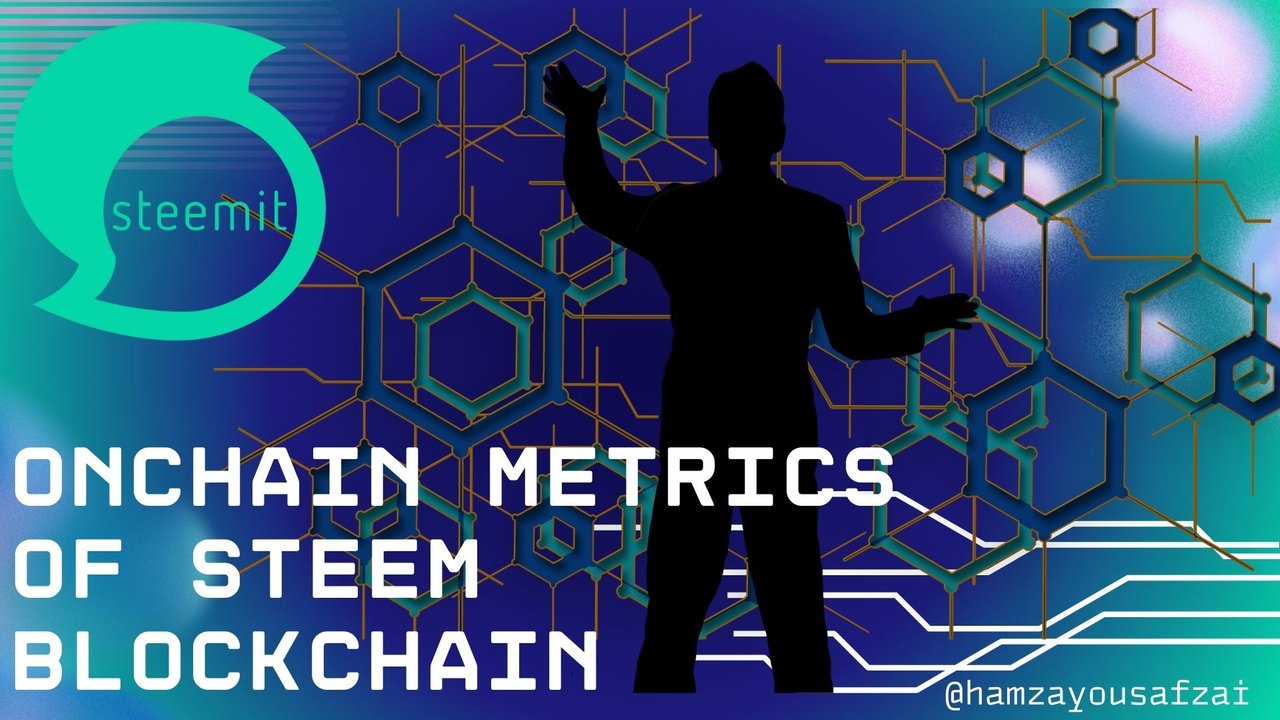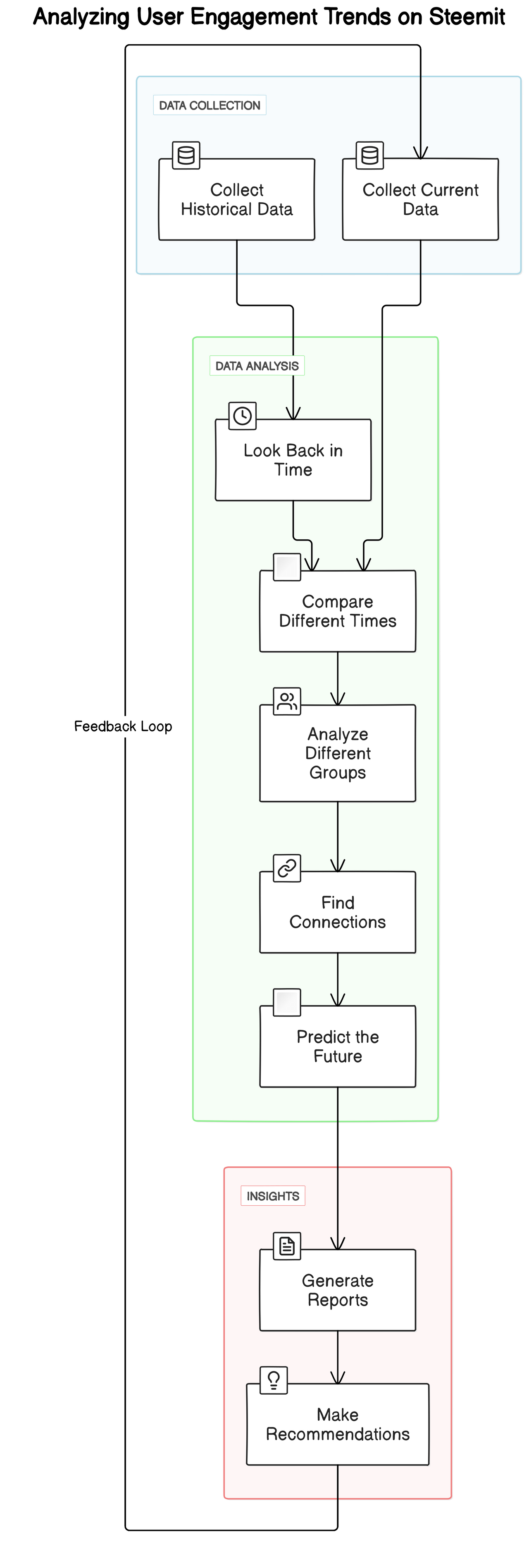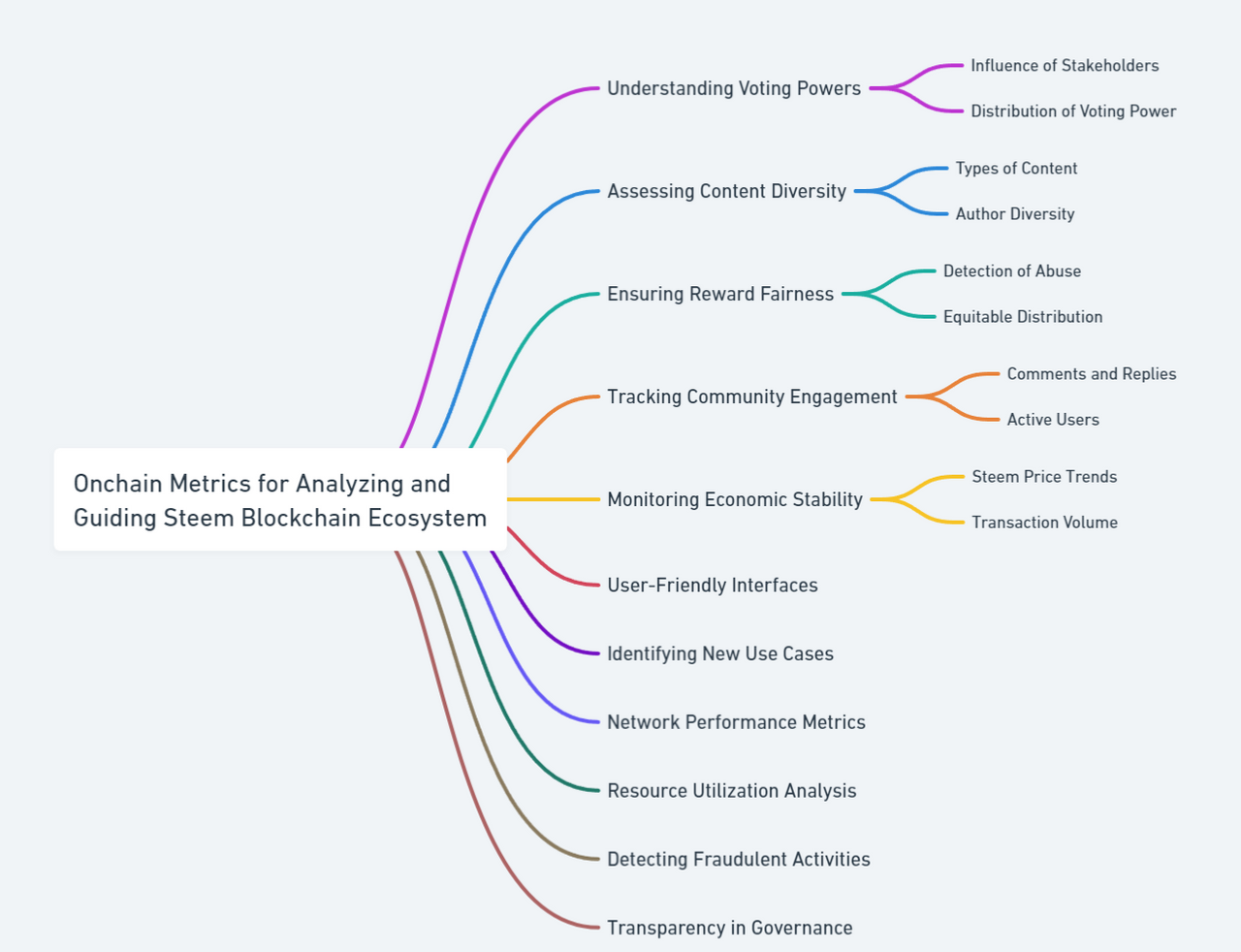SEC S17-W3 || Onchain Metrics of Steem blockchain
19 comments
Hello everyone I hope you all are good and Enjoying your life . After three years of being parts of the Steemit community I am excited to join this adventure into Onchain Metrics on the Steem blockchains. In this challenge i will explore how many posts are made how many likes and comment they get and other cool stuff that tells us how active our Steemit playground is . As we dive into these metrics i will uncover insights into user behavior engagement trends and what makes our community tick.

Analyzing User Activity on Steemit: Key Onchain Metrics Explained |
|---|
1. Number of Publications:
This is like counting how many stories picture or videos people share on Steemit. Imagine you are at big party and each piece of content is like different conversation happening around you. The more conversation there are the livelier the party feel. similarly high number of publications means there lots of activity happening on steemit.
.png)
2. Votes (Upvotes and Downvotes):
Think of votes like thumbs up or thumbs down sign. When someone likes a post they give it thumbs up (upvote) showing that they enjoyed it or found it helpful. On the other hand if they did not like it they might give it a thumb down (downvote). More thumb up means people enjoy the content while more thumbs down might mean they do not.
.png)
3. Comments:
Comments are like people chatting with each other. They show that people are interested in what other are saying and are joining the conversation. Just like at a party when lots of people are chatting its a sign that everyone is having good time and Engaging with each other.
.png)
4. Reputation Scores:
Your reputation score is like your popularity rating on Steemit. Its based on how much others trust and respect you. If you consistently Share good content and interact positively with others your reputation goes up. A high reputation score means you are seen as a reliable and respected member of the community.
.png)
5. SP (Steem Power) Holdings:
Steem Power is like your influence and commitment level on Steemit. Its similar to having shares in a company. The more Steem Power you have the more say you have in important decisions on the platform. It also shows how much you believe in the future of Steemit. Just like investing in a company's future holding Steem Power show your commitment to Steemit success.
.png)
Each of these metrics plays a vital role in evaluating user activity and community dynamics on the Steem blockchain. By analyzing these indicators we can gain insights into user behavior content quality and overall community health enabling us to make informed decisions to enhance the platform usability and engagement.
Understanding User Engagement Trends and Community Evolution on Steemit |
|---|
Analyzing user engagement trends and community evolution on Steemit using Onchain Metrics data is like looking at puzzle to understand how our community is growing and changing over time. Here how I do it
1. Looking Back in Time
I look at data from the past few week months or even years to see how things have changed over time. Its like watching time lapse video of a plant growing we can see how it started how it grew and any changes along the way. By comparing thing like how many posts people are making or how many likes and comments they are getting over time we can spot patterns and trends.
2. Comparing Different Times:
I compare data from different time periods to see what's changed. For example I might compare how many people were active on Steemit before and after a big event or a new feature was introduced. This helps me understand how these events or change affect our community activity and engagement.
3. Looking at Different Groups:
I divide the data into different groups to see if there are any difference between them. Its like sorting bag of candy into different colors we can see if one color is more popular than another. For example I might look at how engagement varies between users with different levels of reputation or between different types of content creators. This helps me understand what kinds of activities or user are driving engagement in our community.
4. Finding Connections:
I look for connection between the data and other things happened around us. Its like noticing that people buy more ice cream when its hot outside we can see how outside factor influence behavior . For example I might notice that there a spike in activity on Steemit whenever there a big event happening in the worlds. This helps me understand what factors are influencing our community activity and engagement.
5. Predicting the Future:
Finally I use all of this information to try and predict what might happens in the future. Its like looking at a weather forecast to see if its going to rain tomorrow we can make educated guesses based on past patterns. For example if I notice that engagement tends to drop during certain time of the year I can plan ahead and try to find ways to keeps our community Engaged during those times.
By using these methods to analyze Onchain Metrics data from Steemit I can get a better understanding of how our community is growing and changing over time. This helps me make decisions that will keep our community strong and vibrant for years to come.
Deciphering Onchain Metrics Challenges: Navigating the Unique Landscape of the Steem Blockchain |
|---|
Interpreting Onchain Metrics on the Steem blockchain present several challenges due to its distinctive social structure and incentive mechanisms.
1. Complex Incentive Structure:
The reward system on Steem where users earn cryptocurrency (STEEM) for their contributions adds complexity to interpreting Onchain Metrics. users may engage in variou activities such as posting voting and Commenting driven by the desire to earn reward. This can lead to fluctuations in Engagement metrics that may not always reflect genuine user interactions.
2. Influence of Power Users and Whales:
The Steem ecosystem is characterized by the presence of power user including whales who hold significant amounts of STEEM. These users have substantial voting power Which can skew engagement metrics and influence the visibility and reward of content. Distinguishing between organic engagement and activity driven by influential user is challenging when analyzing Onchain Metrics.
3. Bid Bot and Vote Trading Activity:
Bid bots and vote trading are common practices on Steem where user pay for votes or engage in reciprocal voting arrangement. This artificially inflates engagement metric making it difficult to assess the true popularity or quality of content. Identifying genuine user engagement amidst the presence of bid bot and vote trading activity is significant challenge for interpreting Onchain Metrics Accurately.
4. Spam and Bot Activity:
Spam accounts and bots are prevalent on the Steem blockchain generating fake posts comments and vote. This can distort engagement metrics and create noise in the data making it challenging to distinguish between authentic user interactions and fraudulent activity. Filtering out spam and bot activity to obtain meaningful insight from Onchain Metrics requires sophisticated detection methods and algorithm.
5. Evolving Community Norms and Culture:
The Steem community is dynamic with evolving norms and culture that influence user behavior and engagement patterns. Interpretation of Onchain Metrics musts account for these shifting dynamics users preferences content trends and community interactions evolve over time. Failure to adapt to these changes may result in misinterpretation of engagement metrics and inaccurate assessments of community health.
Navigating these challenges requires a nuanced understanding of the Steem ecosystem and careful analysis of onchain Metrics data. By addressing these challenges effectively stakeholders can gain valuable insights into user behavior engagement trends and community dynamics facilitating informed decision-making and strategic initiatives to enhance the Steem platform.
Navigating Steem's Ecosystem Health: Insights from Onchain Metrics |
|---|
1. Understanding Voting Powers:
On the Steem blockchain analyzing Onchain Metrics helps me see how voting power is spread among users. If a few big player (whales) hold most of the power it might signal a less fair system Where smaller users have less influence. But if power is spread out more evenly it show a healthier and more democratic voting system.
2. Assessing Content Diversity:
Using Onchain Metrics I can dive into the variety of content being shared on Steem. Metric like the range of topics language and formats of posts give me picture of how diverse our platform is. A diverse mix of content means we are catering to a wider audience and engaging more users making our Ecosystem richer and more inclusive.
3. Ensuring Reward Fairness:
With Onchain Metrics I can check if rewards are being distributed fairly among users. By looking at metrics related to reward distribution based on factors like reputation levels or content categories I can see if everyone has a fair chance to earn rewards for their contributions. Fair rewards build trust and confidence in our community.
4. Tracking Community Engagement:
Onchain Metrics help me track how active and engaged our community is. Metrics like the number of posts comments and votes as well as user retention rates give me insights into how lively our platform is. High engagement level mean our community is thriving with users actively participating and interacting with each other.
5. Monitoring Economic Stability:
Using Onchain Metrics I can keep an eye on the economic health of the Steem ecosystem. Metrics related to the value and circulation of STEEM cryptocurrency as well as transaction volumes give me sense of the platforms economic dynamics. A stable and sustainable economy ensures the long term viability and growth of our ecosystem.
By leveraging these Onchain Metrics effectively I can assess the overall health and dynamics of the Steem blockchain ecosystem. This information guides my decisions and efforts to create a platform that is inclusive fair engaging and economically sustainable for all users.
Navigating Steem Future Leveraging Onchain Metrics for Development and Growth |
|---|
1. Enhancing Usability:
By diving into Onchain Metrics we can see how users navigate our platform. Metrics like how long they stay where they click and what they say can tell us lot about their experience. If we notice people struggling in certain areas we can tweak things to makes it easier for them like rearranging buttons or simplifying processes.
2. Driving Adoption:
Onchain Metrics help us understand what attracts users to Steem and what keeps them coming back. By analyzing metrics like sign up rates how many people refer others and which content gets the most attention we can fine tune our strategies to attract more users. This might involve rewarding users for inviting friends highlighting popular content or making it easier for newbies to get started.
3. Addressing Scalability:
Scaling up while keeping things running smoothly is big challenge for any blockchain platform. Onchain Metrics give us insight into how our platform handles increasing traffic and transactions. By monitoring metrics like transaction speed network congestion and user activity we can identify bottlenecks and implement solutions to keep things running smoothly as we grow.
4. Upholding Community Integrity:
Keeping our community safe and trustworthy is paramount. Onchain Metrics help us spot any bad actors or abusive behavior that might harm the community. Metrics like voting patterns account reputation and content authenticity can help us identify and takes action against spam fraud or other harmful activities ensuring a positive and respectful environment for all users.
By leveraging Onchain Metrics in these ways we can make data driven decisions to improve usability drive adoptions tackle scalability challenges and maintain the integrity of our community. Its like having a compass guiding us towards a stronger and more vibrant Steem ecosystem.
I am inviting @neelofar @sualeha @dave-hanny


Comments